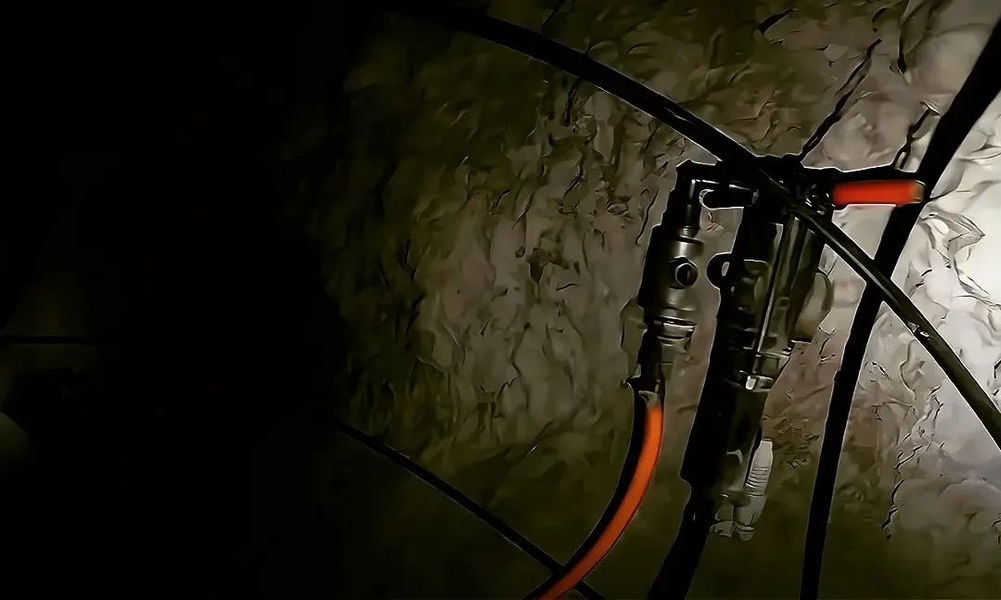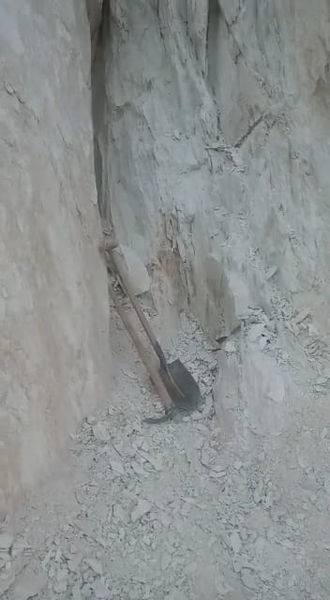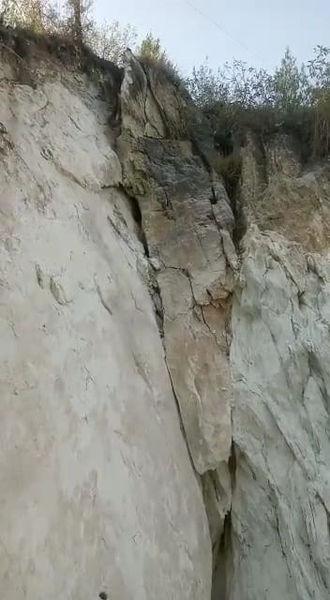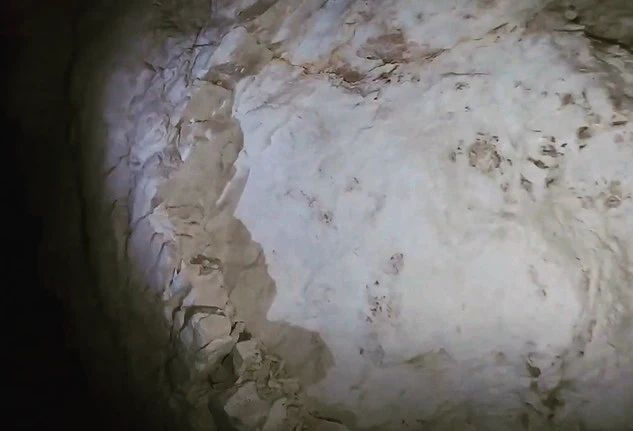
MINING & EXPLORATION
OUR PROCESS INVOLVES,
>MINING
>TESTING & SORTING ACCORDING TO TALC RESPECTIVE GRADES
>REMOVING WASTEAGE
>SUPPLIED & EXPORTED DOMESTICALLY & GLOBALLY
TALC & BARITE MINES
Our talc and barite mines are strategically located in Pakistan and Afghanistan, two regions known for their rich mineral deposits. These mines produce high-quality talc and barite, ensuring a reliable supply of raw materials for various industries. With a focus on sustainable extraction and strict quality control, our mining operations meet global standards while supporting both local economies and international markets
MINING & EXPLORATION
2008-Present
(Leased)
Abbottabad Talc Mine
Talc Mines in Abbottabad, Pakistan
Abbottabad, located in the Khyber Pakhtunkhwa (KPK) province of Pakistan, is known for its significant deposits of talc, especially in areas like Sherwan. This region has become a key player in the production of high-quality talc, a mineral used in a variety of industries, including paper, plastics, ceramics, paints, and cosmetics.
Geological Overview
The talc deposits in Abbottabad are primarily found in the Sherwan and surrounding areas, which are rich in high-quality talc, characterized by its low levels of impurities like silica and asbestos. This makes the talc from Abbottabad especially desirable for use in industries where purity is crucial.
The geological formations of Abbottabad are conducive to talc mineralization, with layers of talc embedded in sedimentary rocks. These deposits are often composed of magnesium silicate minerals, which can vary in purity depending on the specific location within the mine.
Mining Techniques and Operations
Mining operations in the Abbottabad region typically use both open-pit and underground mining methods, depending on the depth and location of the talc deposits.
-
Open-pit mining is employed in areas where the talc deposits are near the surface, allowing for efficient extraction and processing of the mineral.
-
Underground mining is used for deeper deposits, where miners access the talc veins by tunneling beneath the surface.
Talc is extracted in large blocks, which are then crushed and processed to remove any impurities. The processing methods vary depending on the intended end-use of the talc, but it typically involves milling, sieving, and sometimes flotation to achieve the desired quality.
2014-Present
(Bid)
Owned by the Government of Afghanistan
Merki Khel Talc Mine, Khogyani, Afghanistan
Merki Khel Talc Mine, Khogyani, Afghanistan
Known to be the number 1 mine in the world. The Talc quality from this mine surpasses the properties from Talc in any other mine in the world. The Merki Khel Talc Mine, located in the Khogyani district of Nangarhar Province in eastern Afghanistan, is one of the prominent sources of high-quality talc in the region. This mine is renowned for its rich deposits of talc, a mineral that is used in a wide variety of high end industrial, cosmetic, food & pharma applications.
Geological Overview
The talc deposits at Merki Khel are primarily composed of magnesium silicate minerals, which are rich in talc content and often contain low levels of impurities like asbestos and silica. This makes the talc from this mine highly valuable for industries that require purity, such as cosmetics and pharmaceuticals.
The geological formation of the Merki Khel talc deposit is part of the Afghan-Pakistan foothill belt, which has extensive mineral resources. The talc in this area is found in layers within metamorphic rocks, particularly steatite and talc schists, which are the most common forms of talc in the region. The talc veins are typically large and spread over significant areas, offering a substantial reserve of high-quality mineral.
Mining Techniques and Operations
Mining operations at Merki Khel use both open-pit and underground mining methods, depending on the depth and nature of the talc deposit.
-
Open-pit mining is employed for surface-level talc deposits that can be easily accessed. Large earth-moving equipment is used to extract the talc from the surface and transport it for processing.
-
Underground mining is necessary for deeper deposits, where the talc is accessed by drilling tunnels into the rock formations.
2014-2044
(Leased)
Barite Mine Malakand Division, Mansehra District
Barite Reserves in the Malakand Division, Mansehra District
The barite reserves in this region are considered some of the most promising in Pakistan due to their high quality and significant quantities. Below is a breakdown of the reserve details:
1. Reserve Estimates
Total Proven Reserves: Approximately 3 to 5 million tons of barite.
Measured Reserves: These are areas where extensive geological surveys, core sampling, and mining operations have proven the presence of barite with high confidence. This accounts for around 2 million tons of the total reserves.
Indicated Reserves: Preliminary exploration data suggests an additional 1.5 to 2 million tons, yet to be confirmed through further drilling programs.
Inferred Reserves: Potential reserves in deeper veins and adjacent unexplored areas could add 1 million tons or more, depending on further exploration efforts.
2. Reserve Characteristics
Grade and Purity:
Specific Gravity (SG): Ranges between 3.9 and 4.5, meeting API specifications for drilling mud.
BaSO4 Content with high purity in most veins, with minimal impurities such as silica (SiO2 < 1%), iron oxides (Fe2O3 <0.1%)
Vein Structure:
Length: Barite veins range from 50 meters to 300 meters.
Width: Widths vary from 2 meters to 20 meters, with an average of 12 meters.
Depth: Proven reserves extend to 200–250 meters, with some exploratory findings suggesting depths of up to 500 meters.
3. Geological Context
The barite deposits are primarily hosted within:
Dolomitic Limestone and Schist: The dominant host rocks. These sedimentary formations have been structurally deformed by tectonic activity, creating favorable conditions for barite mineralization.
Fault-Controlled Veins: Barite occurs along fault zones and fractures, often forming in hydrothermal veins, which are rich in other associated minerals such as quartz.
Geological Setting:
The deposits are part of the Himalayan fold-and-thrust belt.
Extensive tectonic activity in the region has exposed mineral-rich zones, enhancing accessibility for mining.
4. Exploration Findings
a. Core Drilling Data
Core samples collected from multiple locations revealed:
Thickness: Barite-rich zones range from 3 to 15 meters in thickness.
Mineral Quality: Consistently high-grade barite across all sampled sections.
Deposit Orientation: Veins generally trend northwest-southeast, aligned with regional fault systems.
b. Geophysical Surveys
Seismic Studies: Confirmed the continuity of barite veins at depth.
Resistivity and Magnetics: Highlighted zones of high mineral density, corresponding to barite-rich areas.
c. Laboratory Analysis
Barite samples tested in laboratories confirm:
High BaSO4 content
Low levels of harmful impurities like arsenic, lead, and radioactive elements, making the barite safe for industrial applications.
5. Distribution of Reserves
The reserves are spread across multiple sites within the region. Key sites include:
Site A:
Reserves: 1.5 million tons.
Vein Width: 8–12 meters.
Depth: Up to 250 meters.
Quality: SG 4.2–4.4, API-grade barite.
Site B:
Reserves: 1 million tons.
Vein Width: 10–15 meters.
Depth: 200 meters.
Quality: SG 3.9–4.4
Site C (Untapped Potential):
Reserves: Estimated 1–1.5 million tons (inferred).
Requires additional exploration to confirm.
6. Extraction Potential
Annual Extraction Rate: The mines have capability to produce up to 150,000 metric tons per year through increased investment in machinery and infrastructure.
Life of Mine (LoM): Based on current reserves and extraction rates, the estimated life of the mine is 50–80 years, depending on operational scaling.
7. Economic Value
Favorable due to low labor costs and proximity to major transport routes.
8. Future Exploration Plans
Deeper Drilling Programs: Planned to explore depths beyond 500 meters.
Geophysical Surveys: Advanced technologies like 3D seismic imaging to map reserves with greater precision.
Adjacent Areas: Exploration in neighboring districts to identify additional barite-rich zones.



















